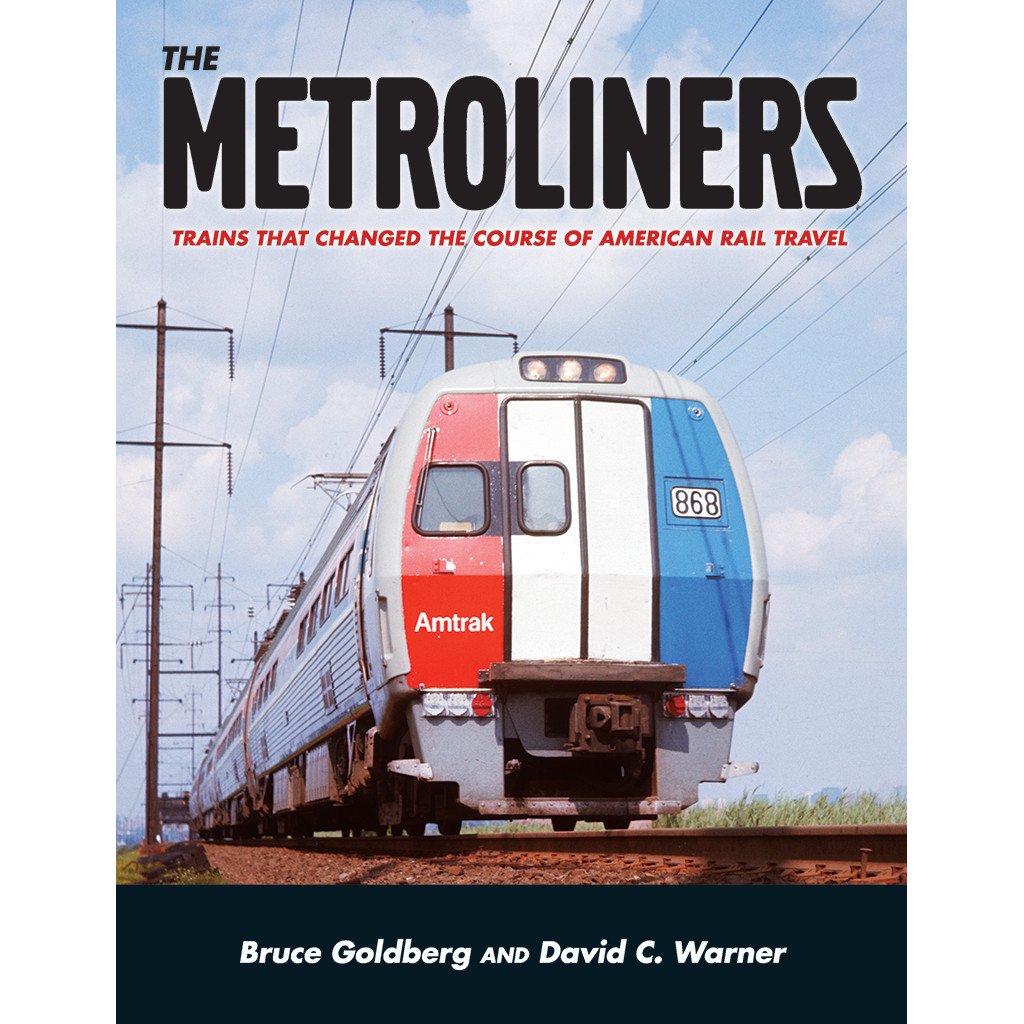By Bruce Goldberg and David C. Warner
White River Productions, P.O. Box 48, Bucklin, MO 64631; 124 pages, hardcover, 8 ½ x 11 inches; $59.95
shop.whiteriverproductions.com
Recounting the history of the Northeast Corridor’s first premium service in a breezy narrative that knows what to leave in and what to leave out, authors Goldberg and Warner have made this a definitive but extremely readable work by cleverly intermixing interior and exterior photography, newspaper ads, promotional materials, timetable covers, menus, and maps.
In other hands, the story might have been limited to hardware and operations: how a set of tubular, stainless steel electric multiple unit cars built by the Budd Company made its first revenue run on Jan. 16, 1969, launching the Metroliner brand that survived into Amtrak’s Acela Express era. The authors do an excellent job tracing the initial fleet’s history, from mid-1960s testing, teething problems caused by incompatible General Electric and Westinghouse traction components, to the failure of modifications in the late 1970s meant to improve reliability. They also explain how Penn Central’s bankruptcy, the transition to Amtrak, and the subsequent Northeast Corridor Improvement Project impacted the service.
But what makes the account especially entertaining are insider morsels contributed by Goldberg’s stint in Amtrak’s marketing department. These include dealing with ever-fluctuating airline competition, which factors drove pricing decisions, how on-board offerings changed during the morph to AEM-7 locomotive-hauled Metroliner Service Amfleet equipment, and the strategy behind advertising initiatives such as “The Civilized Shuttle” campaign.
Chapters on the parallel introduction of a United Aircraft TurboTrain between New York and Boston, unsuccessful New England Metroliners on the same route and San Diegan Metroliners in California, plus Swedish X-2000 and German ICE train test trials provide welcome context. The authors also explain how the premium Metroliner brand set the table for Acela trainsets, whose testing Warner was directly involved with, and the circumstances under which Amfleet-equipped trains made their curtain call 10 years ago on Oct. 27, 2006. Goldberg was there, riding both the first and last runs.
The final 20 pages effectively compartmentalize equipment rosters of the original self-propelled cars; a chronology of significant events; and timelines in table and chart form detailing running times, frequencies added and dropped, ridership peaks and valleys, and fare history.
An epilogue makes the point that as one of America’s first government-funded rail projects, public acceptance of Metroliners convincingly demonstrated that travelers would ride modern, fast, and comfortable trains at a time when U.S. railroads were either bankrupt like Penn Central or flooding the Interstate Commerce Commission with train-off petitions. Amtrak’s creation may have occurred anyway, but these pioneering beacons running on the Northeast Corridor provided a constant reminder during its infancy why passenger rail was worth saving.















I love this book. It gives an extensive coverage about all versions of Metroliners, the fastest trains in US, that changed the course of American rail travel. It includes very nice photos. Strongly recommend!